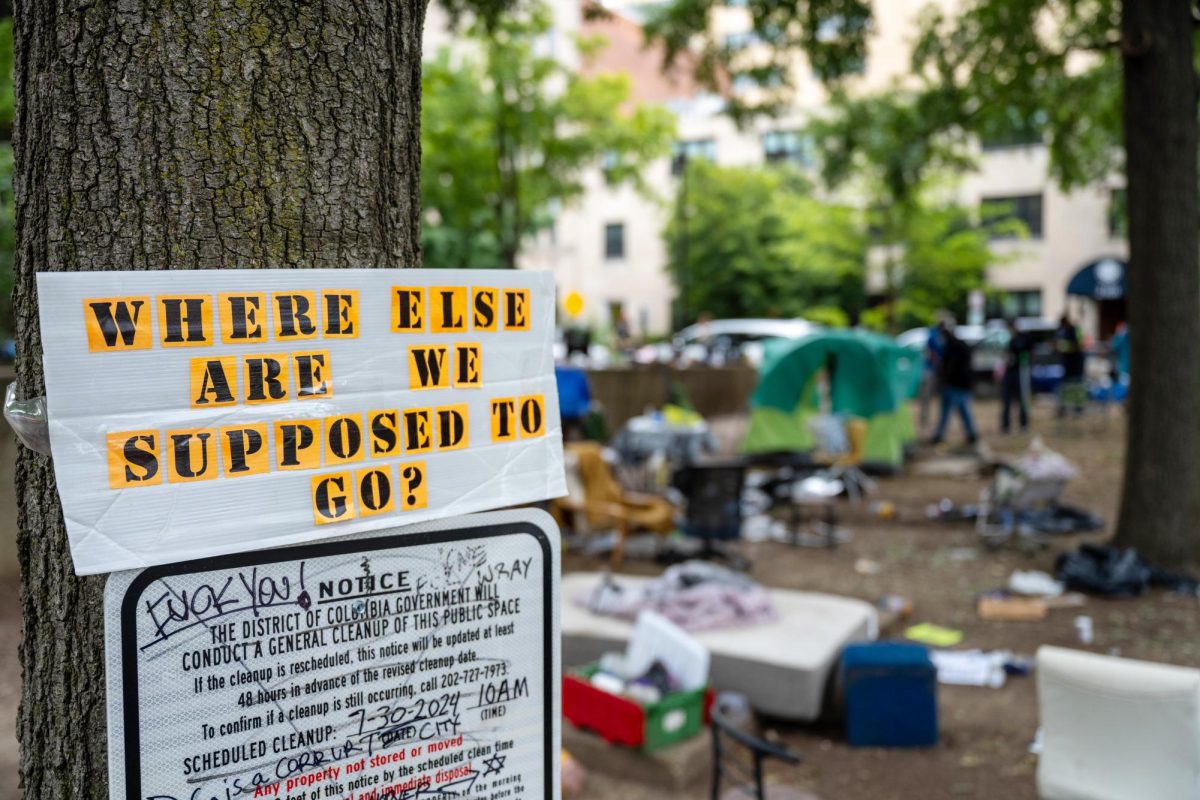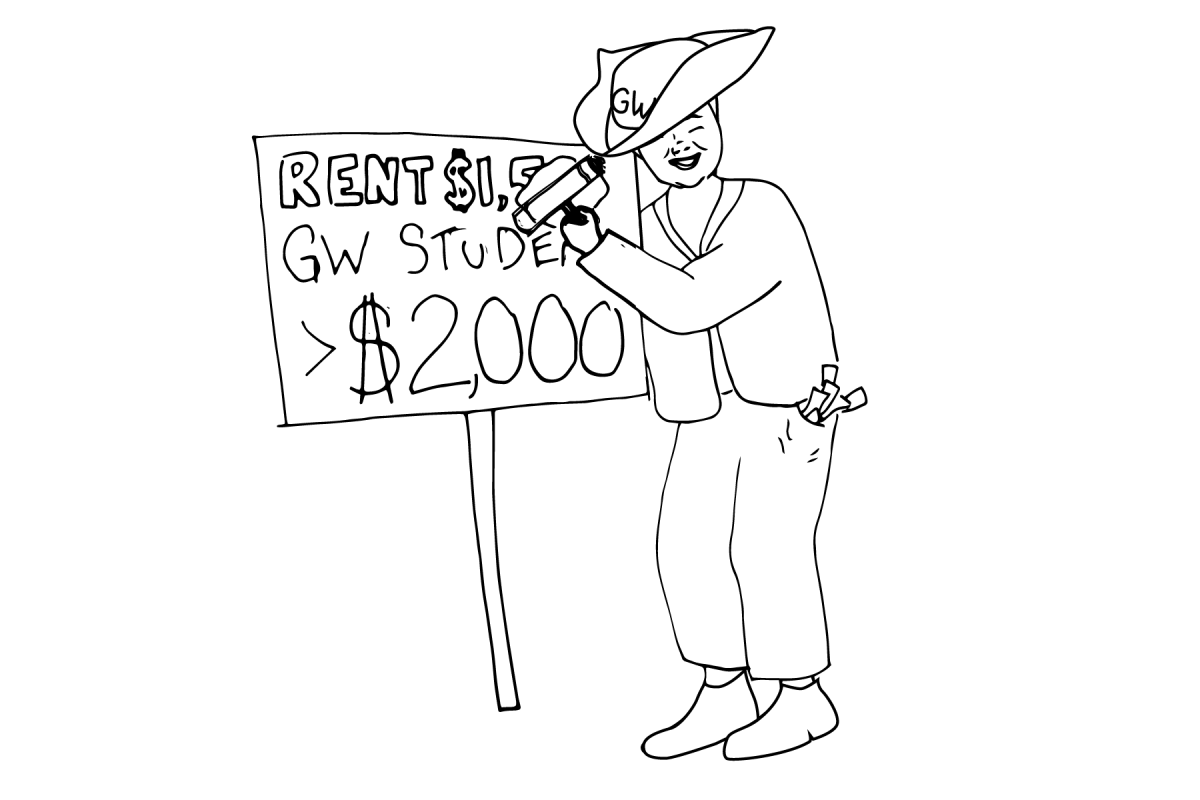Mark Twain’s words couldn’t be more pertinent when discussing art and its preeminent detractors. “Out of Context – A View from the Hill” is the transfixing new art exhibit on display in D.C.’s Zenith Gallery. Artists Raymond Wiger and David Morgan present a tonal ultimatum to the United States Senate, offering pieces directly responding to Attorney General John Ashcroft’s covering of a nude statue at the Department of Justice with a $7,000 drapery last January. Wiger and Morgan pose this question: In art, should the nude figure be banned from the public’s view?
Art is not a medium with motives of debauchery. And the human form has represented purity and natural beauty since the Greeks carved it into the faces of buildings. But the government doesn’t view it as such.
“The Greeks used the nude in all their art. It always depicted the ideal condition that the mortal could achieve,” said Wiger in a recent Hatchet interview with the two artists. “To them, the art was a celebration of the body. The art taught lessons, inspired, was meant for all audiences and was the common vernacular for all, even the illiterate, to understand.”
In Europe, the body was even imprinted on the currency, the representation of value and worth for a culture.
Connotation is audience-borne, and thus, so is interpretation. To limit the essence of the art within the narrows of a single prurient mindset is, according to Wiger, “unfortunate.”
To diminish its integrity and eliminate it from world-view altogether is “sterilizing, isolating and insulting,” Wiger said.
“It’s frightening. There’s already enough of a problem with the separation of art and commerce today; this furthers that problem,” added Morgan.
Wiger and Morgan’s sculpture and photography demonstrate a lyrical progression of texture and perspective. But their exhibit is less a show than an essay on censorship and the government’s command over artistic freedom of expression.
When Ashcroft shrouded the bare-breasted statue of justice and when Senate Rules Committee chairman Mitch McConnell stated anything depicting nudity or violence would not be displayed in the District, Wiger voiced his concerns.
“This program explores the constant and unresolved judgments of elected officials to censor their citizens,” Wiger said. “Their often narrow, moral perspectives on art hinder it and those who don’t get exposed to it.”
Art seeks to liberate and inquire – to ask hard questions and to celebrate our existence. “Altering art like this changes it from the allegorical to the decorative,” Morgan said.
Both agreed covering up pieces of an artist’s work compromises the integrity and intellectual integrity of their vision.
They also said they wanted to know where the line of censorship is drawn. Nearly every federal building and monument in D.C. is adorned with carvings of nude figures and symbolic expressionism. They said they are unsure as to what makes specific art inappropriate.
“Now, more than ever, we need this debate,” Morgan said.
Included among the original works by Wiger and Morgan are nude male and female forms fashioned out of steel mesh. Each is in a state of captured motion, reaching out, descending from the heavens and twisted in choreographed bends.
“Art is a representation of purity,” Wiger said. “You eliminate the face from the figure, and the notion of race is blurred. You eliminate a few other characteristics, and the sex is, as well. It’s about pure, natural beauty.”
Morgan’s photographs suggest the intimacy of ballet and the craggy solidity of the body as a living sculpture.
“I just look through the camera, without planning,” he said. “My eye is what captures the moment, not the environment. I don’t attempt anything stylized, the style emerges from the picture.”
All are encouraged to visit the Zenith Gallery; this is an exhibition that makes visual the credo “the truth shall make you free.” Wiger and Morgan are emphatically questioning the purpose and relevance of governmental censorship of art.
Well, Mr. Attorney General, the ball’s in your court.



